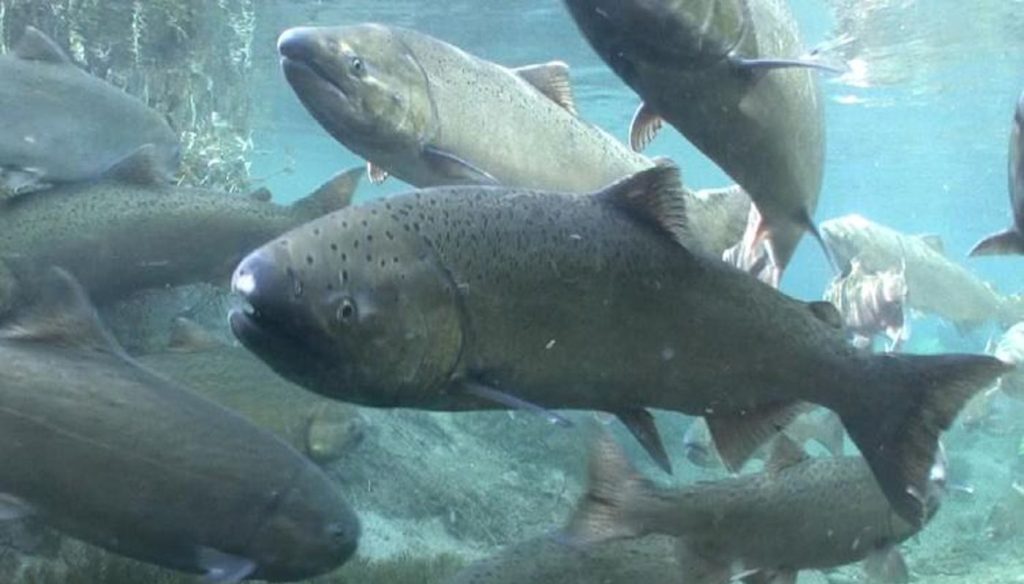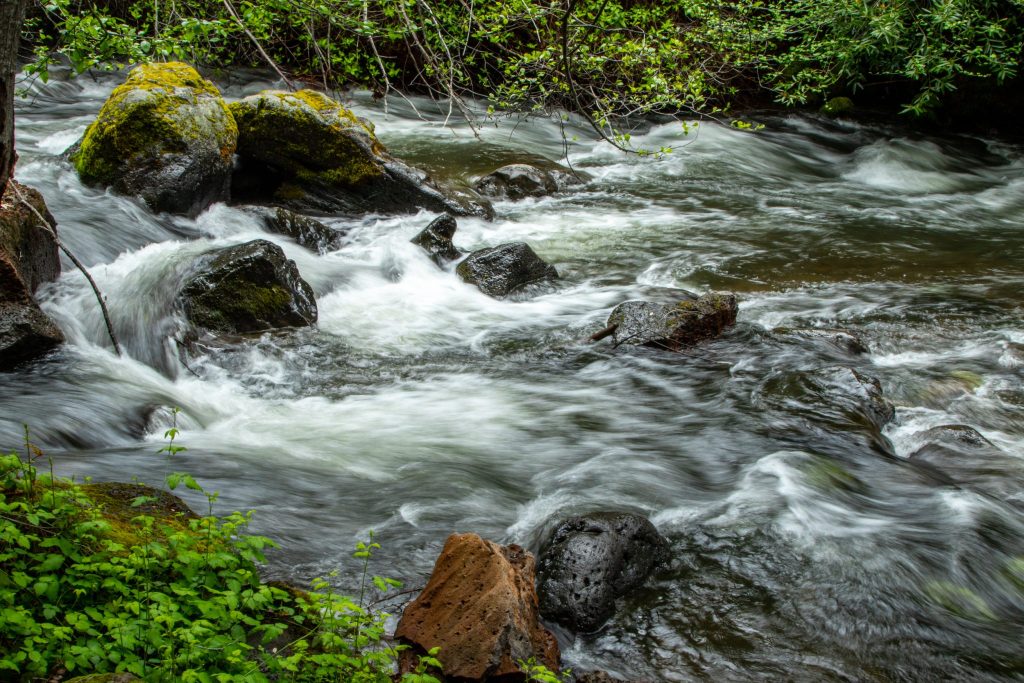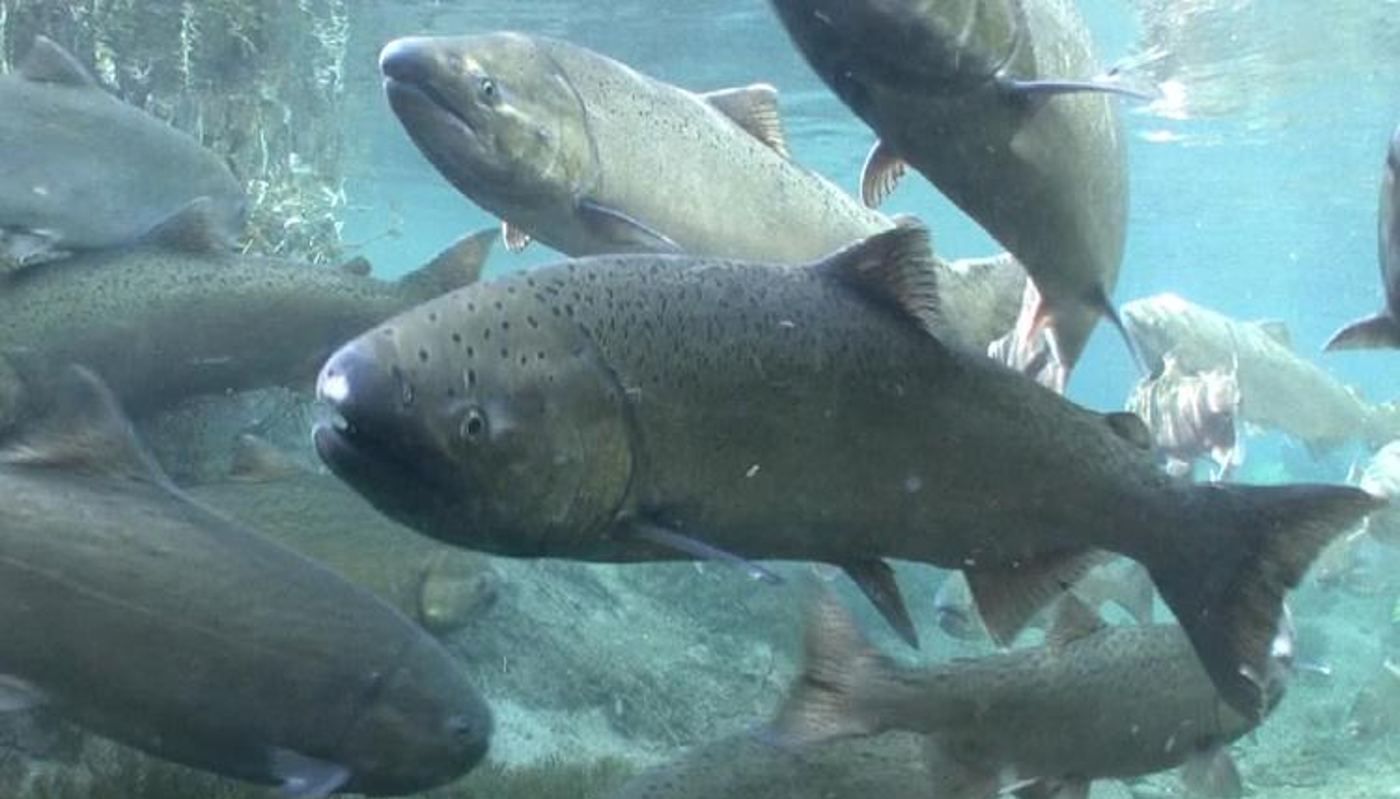
The historic reintroduction of Chinook salmon into a California creek this spring will help secure another generation of this iconic species.
State and federal biologists have been busy moving endangered adult winter-run Chinook salmon to the upper reaches of Battle Creek and threatened spring-run Chinook salmon to Clear Creek in Northern California, where colder water temperatures will better support spawning and help their eggs survive the continuing drought.
Together the scientists will return about 300 adult winter-run Chinook salmon to native habitat above Eagle Canyon Dam on North Fork Battle Creek, about 20 miles east of Cottonwood, in Shasta/Tehama counties for the first time in more than 110 years.
It is one of a series of urgent actions to help the native fish survive another year of the lasting drought, high temperatures, and other stressors.
Agencies Join Forces
Various agencies, including CDFW, USFWS, NOAA Fisheries, Bureau of Reclamation, the California Department of Water Resources, and water users are working closely with the Winnemem Wintu Tribe, whose culture is intertwined with salmon in the area.
MORE: Scotland Aims to Save Wild Salmon By Planting Millions of Trees Along the Rivers
Actions to help the salmon population include managing releases of limited water stored in Shasta Reservoir into the Sacramento River, where additional spawning gravel has been placed, to improve the odds that the released water is cool enough to allow some Chinook salmon eggs in the river to survive.

Scientists are also expanding production of juvenile winter-run Chinook salmon at Livingston Stone National Fish Hatchery operated by the USFWS at the base of Shasta Dam.
Offspring produced at the hatchery in recent years have helped save the species as most of their eggs in the wild died. Juvenile fish will be released into the river in stages when conditions are more hospitable in the late fall and winter.
They will be moving adult spring-run Chinook salmon that return up the Sacramento River to the upper reaches of Clear Creek in Shasta county to cooler water and increased chances of egg survival.
Boosting the resilience of transported adult salmon with injections of thiamine (Vitamin B) is also being managed.
There are also plans to track the survival and reproduction of the transported fish as part of a science plan to learn from these actions to promote climate resilience of Chinook salmon. Research includes field studies to understand the productivity of historic habitat where winter-run Chinook salmon will be reintroduced.
The transport of adult winter-run Chinook salmon to upper Battle Creek builds on the “jumpstart” reintroduction program that began in 2018 with annual releases of juvenile salmon in lower reaches of the creek.
LOOK: Because Amazon Tribes Were Trusted, A True River Monster Was Saved
Many of the released fish migrated to the ocean and have returned as adults to spawn, demonstrating that Chinook salmon can reestablish themselves given habitat that remains cool enough for their eggs to survive the summer.
Resilience of an iconic species
State and federal salmon recovery plans also call for returning winter-run Chinook salmon to historical spawning habitat in the McCloud River above Shasta Dam and Reservoir. That requires a means of collecting juvenile salmon that hatch and try to swim downriver toward the ocean and need to safely get past the 600-foot high Shasta Dam. Agencies plan to test a pilot juvenile collection system this fall.
These efforts are part of a comprehensive program in the Sacramento Valley to address all freshwater life-cycle stages to benefit all four runs of Chinook salmon in the region.
Work will continue this year to advance science through the Sacramento River Science Partnership and to implement projects in the downstream reaches of rivers and creeks to create additional spawning habitat, side channel rearing habitat, fish food and migration barrier removal.
These efforts are also part of a longer-term recovery effort underway to address climate change and provide greater resilience for salmon by expanding access to important habitat and landscapes, including reintroduction for spawning and rearing above Shasta Dam and Reservoir, spawning in the upper reaches of Battle Creek, and food sources and safe haven in the bypasses, oxbows, and historic floodplain in the lower part of the system.
Source: U.S. Fish & Wildlife Service
SWIM Hope Over to Pals; Share This Chinook Story….




















